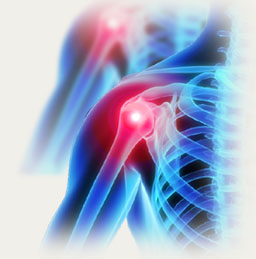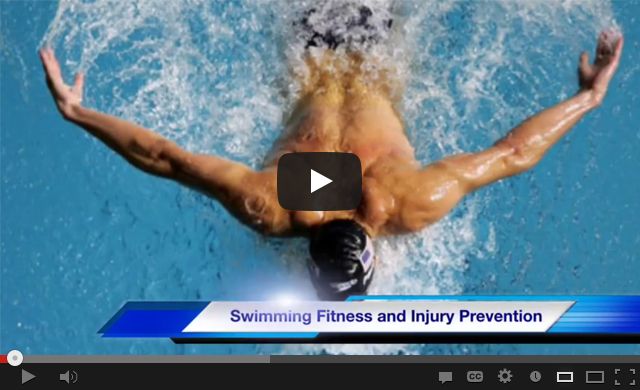|
by: Andrea Lubeck PT, DPT

Shoulder injuries can occur from swimming due to the repetitive nature of strokes. The shoulder is the most mobile joint in the body and swimming places unique forces on the joint in a wide range of motion not usually experienced on land. Competitive swimmers complete thousands of strokes every day which can lead to overuse injuries. Recreational or new swimmers may experience impingement injuries related to muscle imbalances and inadequate flexibility around the shoulder.
Swimming related shoulder injuries often involve the rotator cuff muscles, which are responsible for making small adjustments to how the humerus rotates and glides against the scapular joint surface as the arm moves. If these muscles are not working properly the humerus can move inappropriately and cause pinching of other anatomical structures within the joint. Weakness of the scapular stabilizing muscles that anchor the shoulder complex to the body can lead to poor positioning and improper movement patterns in the shoulder joint, which overtime can lead to injury.
Rehabilitating swimmers from shoulder injuries often involves controlling inflammation of the affected structures, temporarily reducing the repetitive activity, correcting inappropriate movement patterns, and strengthening the rotator cuff and scapular stabilizing muscles to maintain correct positioning of the shoulder joint throughout its range of motion. Rotator cuff strengthening is often started with the arms low and next to the body where the joint is in a neutral position, then gradually progressed to overhead movements and end ranges utilized by the sport. Proper biomechanics of the joint must be achieved prior to advancing exercises to avoid reinjury. Stretching is helpful to allow unrestricted motion throughout the range required for each stroke. Sometimes specific manual mobilization is required to stretch the capsule surrounding the joint to improve
its movement. Stabilization exercises create a strong foundation of the scapula against the body so the shoulder joint may safely move against the variable resistance of the water.
It is important for swimmers of all abilities to incorporate a dryland program into their training to ensure appropriate strength and flexibility of the shoulder. Regular performance of these exercises will help prevent injury and improve your efficiency and power in the water. The shoulder is a complex joint, and a physical therapist can help you navigate the waters of rehabilitation by tailoring specific exercises for safe strengthening, help correct biomechanical problems, and perform manual interventions to optimize the function of your shoulder for swimming. Make your appointment today and swim better tomorrow.
Swimming Fitness and Injury Prevention (VIDEO):
|

Click to view video
|

